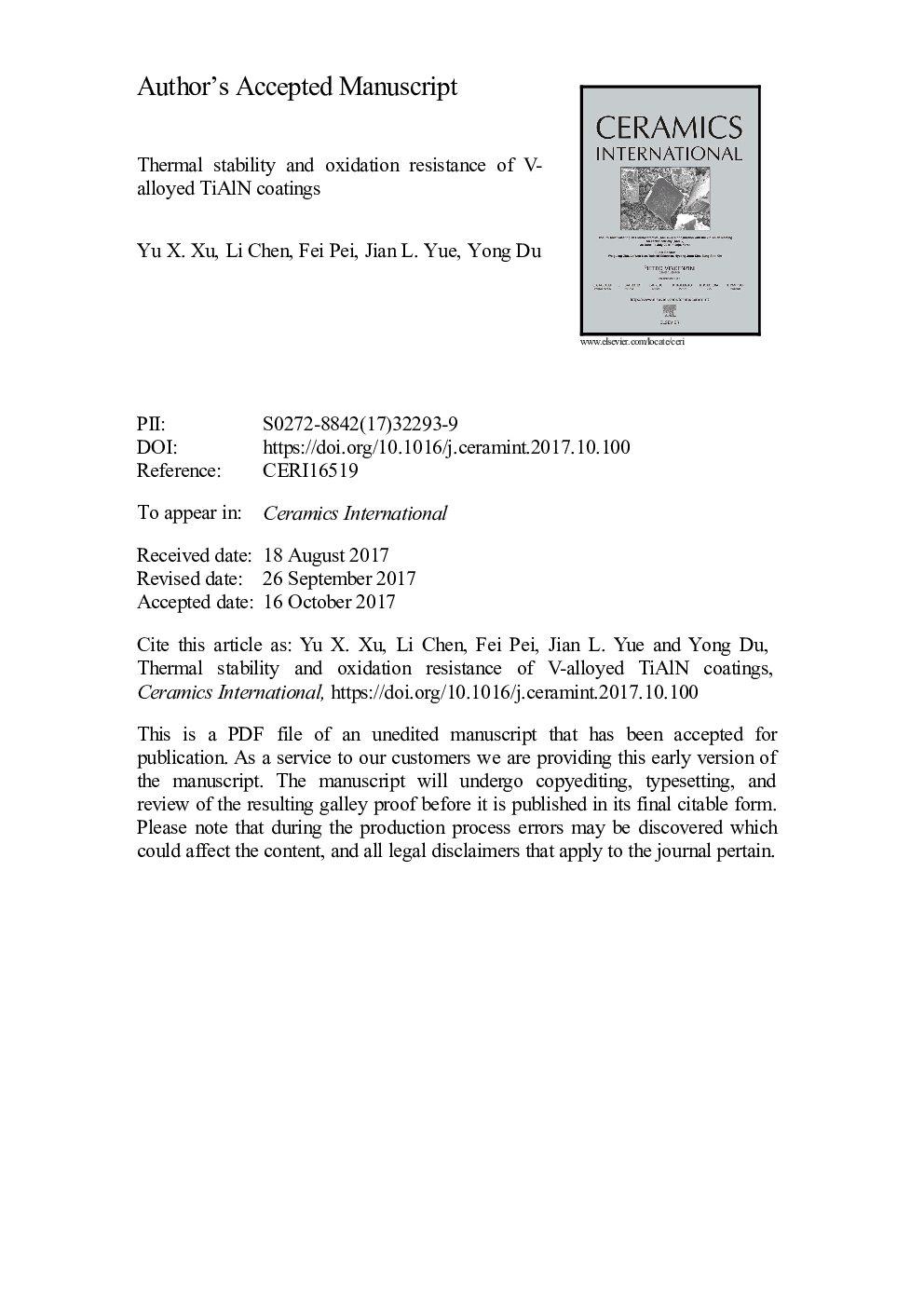| Article ID | Journal | Published Year | Pages | File Type |
|---|---|---|---|---|
| 7888977 | Ceramics International | 2018 | 26 Pages |
Abstract
V-containing nitride coatings recently attract a wide range of research interests owing to their excellent tribological properties. To evaluate their comprehensive properties, a comparative study on the intrinsic thermal stability and oxidation resistance of TiAlN and TiAlVN coatings are conducted here. Ti0.56Al0.44N, Ti0.50Al0.44V0.06N, and Ti0.40Al0.50V0.10N coatings, deposited by cathodic arc evaporation, exhibit a single-phase face-centered cubic structure with a hardness of 28.9-29.8 GPa. The V-containing coatings show a pronounced age-hardening upon annealing, which contributes to a hardness increase of 3.7 and 4.8 GPa at 800 °C for Ti0.50Al0.44V0.06N and Ti0.40Al0.50V0.10N, respectively, corresponding to 2.9 GPa for Ti0.56Al0.44N. Also, alloying with V retards the formation of wurtzite AlN upon annealing, especially in Ti0.50Al0.44V0.06N, and thus contributes to a higher hardness above 30 GPa even annealing at 1100 °C, while the hardness of Ti0.56Al0.44N significantly reduces to 27.8 ± 0.6 GPa. However, alloying with V into TiAlN leads to an earlier formation of rutile TiO2 and also Ti-rich oxide top-layer on the outside surface instead of dense Al2O3, and thus degrades the oxidation resistance. When exposed to air at 700 °C for 10 h, the Ti0.50Al0.44V0.06N and Ti0.40Al0.50V0.10N coatings suffer from a severe oxidation, whereas only a compact oxide scale with a thickness of ~ 80 nm for Ti0.56Al0.44N is formed.
Keywords
Related Topics
Physical Sciences and Engineering
Materials Science
Ceramics and Composites
Authors
Yu X. Xu, Li Chen, Fei Pei, Jian L. Yue, Yong Du,
